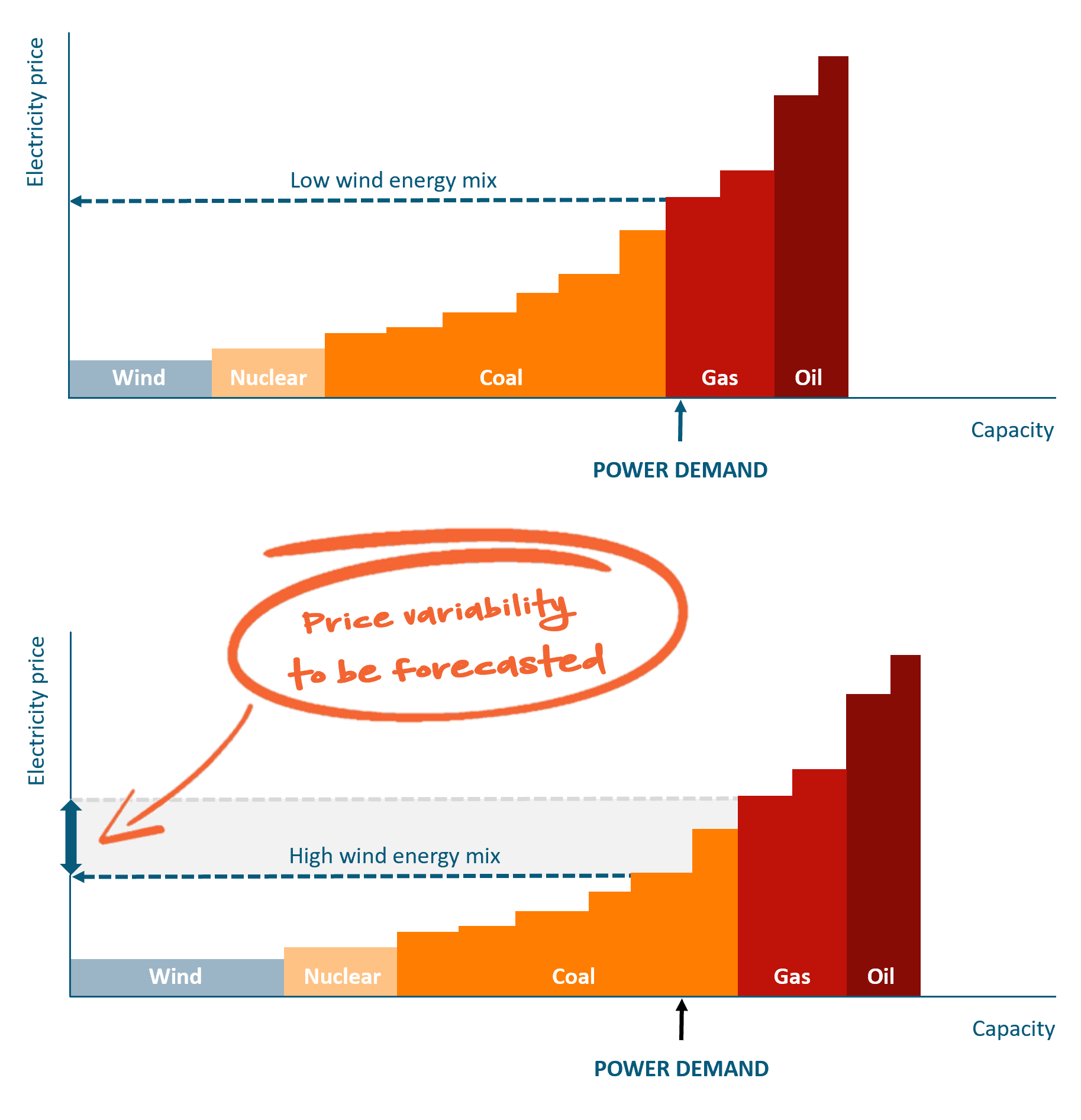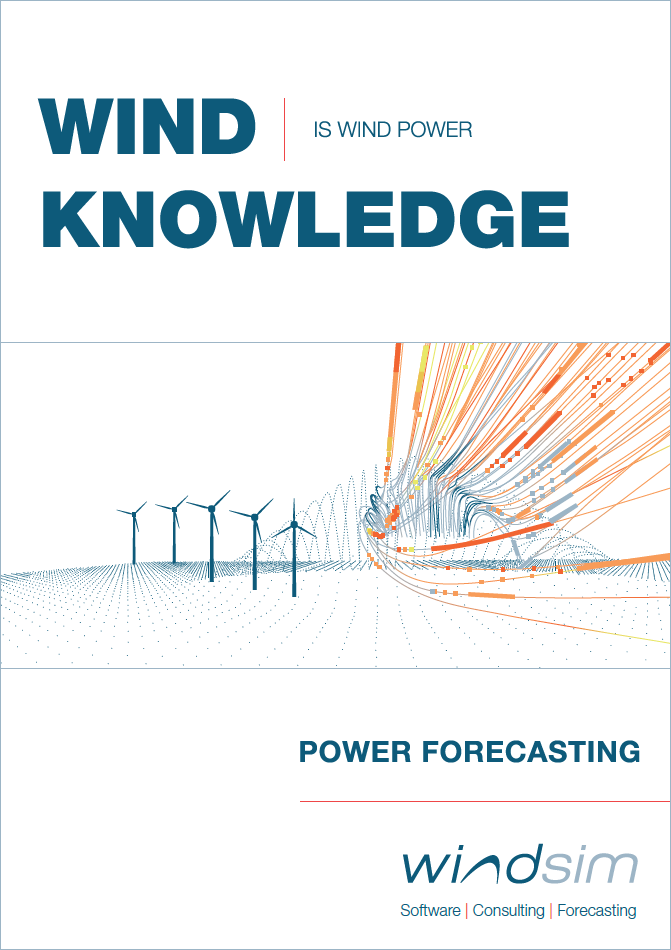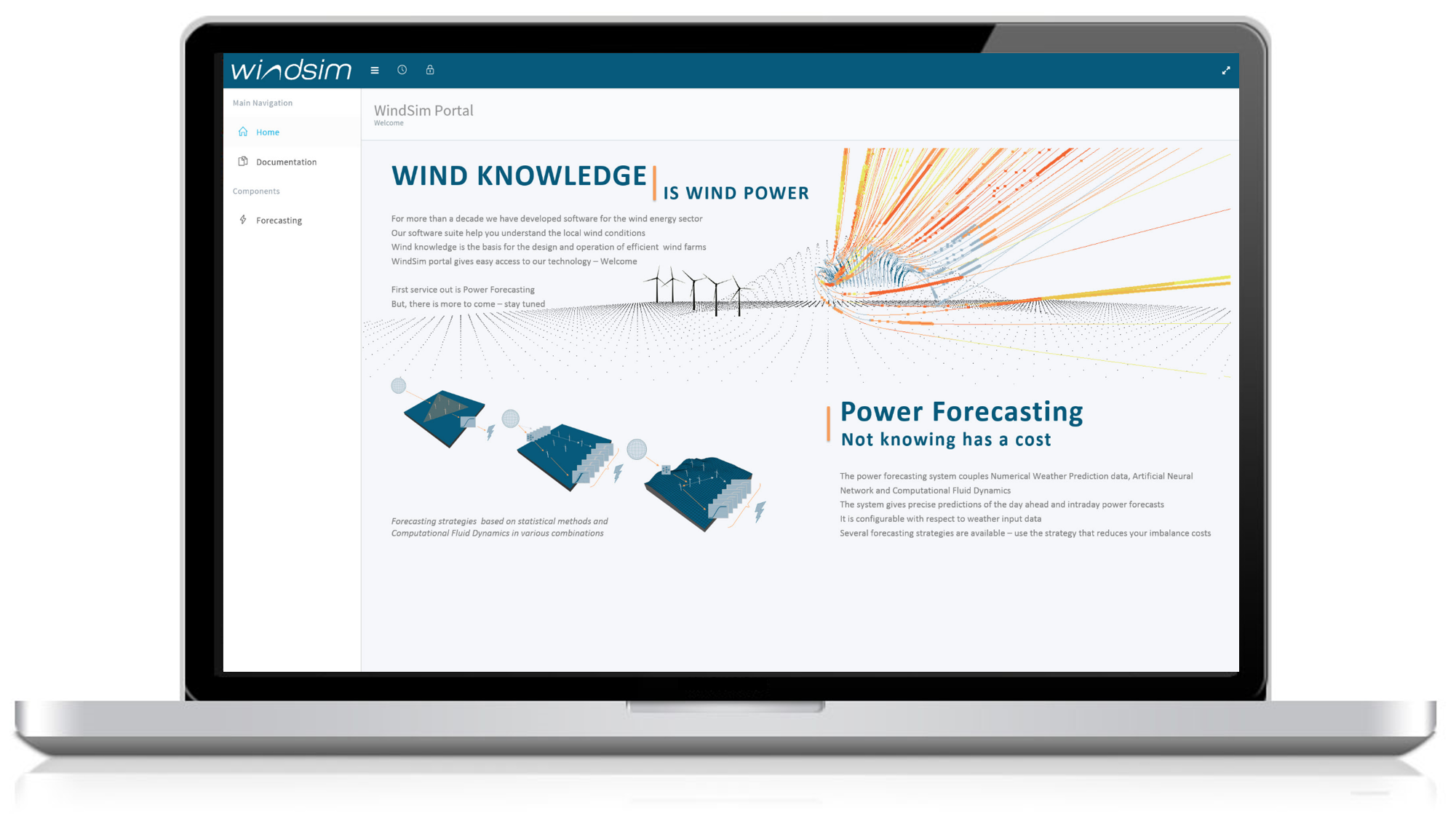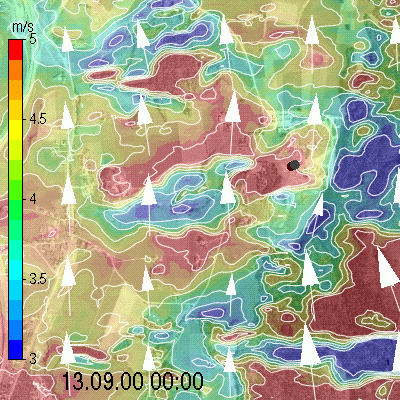Power Forecasting
Accuracy with hybrid modeling
We provide customized power forecasting, unique to each client. Depending on requested accuracy level, we configure a power forecasting solution in accordance with the clients needs.
The power forecasting couples Numerical Weather Prediction (NWP), Artificial Neural Network (ANN) and Computational Fluid Dynamics (CFD). We call it hybrid modelling as we combine both physical and statistical methods.
The power forecasting is highly flexible:
- Intraday or Day-ahead
- Configurable with respect to weather input data
- Flexible time resolution
- Integration of online data
- Integration of turbine availability
- Multiple strategies, Hybrid modeling
Interested in seeing what we can do for you – Contact us today
Portal Login
The power forecasting services is setup on the Portal either by us or directly by the client.
The Portal allows for flexibility in the input and output data such as weather data providers, online production data and availability data. It allows for setting up various power forecasting methods, or so-called strategies, searching for the most accurate power forecast for your wind farm. Results can be inspected on the Portal or to be delivered by FTP or through an API.
![]()
![]()
Technical Basics
Bridging the scales
Basically, wind power forecasting is a challenge because it involves a wide range of scales in space and time. The global models, and even the meso models are unable to establish sufficiently high-resolution wind fields required to predict accurately the power production of a wind farm. Their resolution on the kilometre scale is too coarse to capture the wind behaviour on the micro-scale. Typically, the scale reduction factor going from global to meso scale is in the order of 10, whereas from meso to micro scale the factor is in the order of 100.
![]()

![]()
Hence, the greatest challenge is to bridge the gap from meso to micro scale. Today the big bulk of power forecasting solutions rely entirely on statistical modelling to bridge this gap. We combine statistical and physical models to reduce the forecasting errors.
Strategies
Our wind power forecasting system couples Numerical Weather Prediction (NWP) data, Artificial Neural Network (ANN) and Computational Fluid Dynamics (CFD). It allows for multiple strategies, that is various ways to combine the NWP, ANN and CFD data. The most elaborated strategies can give precise predictions for the Day Ahead and Short Term (Intra-Day) power forecasts.
Development and Validation
Our wind power forecasting technology has developed over many years through R&D projects and Joint Industry Projects. The development started in 2009 by simple extensions of the WindSim software when existing customers started to use the software within power forecasting. Today we have migrated our power forecasting technology to the Portal.
In 2015 we took part in a trial delivering wind power forecasts for a portfolio of European wind farms with an installed capacity of 1000 MW. The trial allowed us to compare the accuracy of our service against many of our competitors. The trial period was 6 months, among 16 participants we performed second best.
![]()

Videos and papers
Get in depth knowledge about our strategies, watch the instruction videos. Find listed papers related to power forecasting, for a complete list of videos and papers see Library.
- Meso-microscale coupling for wind resource assessment using average atmospheric conditions
- P. Duran, C. Meissner, K. Rutledge, R. Fonseca, J. Martin-Torres, WindEurope Hamburg, 2018. (pdf document 1.5 Mb)
- Day ahead wind farm power production forecast using a high resolution mesoscale model and various downscaling techniques
- M. Mana, C. Meissner, WindEurope Hamburg, 2018. (pdf document 0.7 Mb)
- Meso-microscale coupling for wind resource assessment using averaged atmospheric conditions
- P. Duran, C. Meissner and G. Kersting, WindEurope Hamburg, 2017. (pdf document 0.9 Mb)
- Short time ahead wind power production forecast
- A. Sapronova, C. Meissner, M. Mana, WindEurope Hamburg, 2016. (pdf document 0.6 Mb)
- Short time ahead wind power production forecast – presentation
- A. Sapronova, C. Meissner, M. Mana, WindEurope Hamburg, 2016. (pdf document 0.8 Mb)
- Wind Power Forecasting techniques in complex terrain ANN vs. ANN-CFD hybrid approach
- M. Mana, F. Castellani, D. Astolfi, M. Burlando, C. Meissner, E. Piccioni, WindEurope Hamburg, 2016. (pdf document 1.7 Mb)
- Machine learning for short time ahead wind power forecast
- A. Sapronova, C. Meissner, M. Mana, EWEA Paris, 2015. (pdf document 10.1 Mb)
- Benefits of using CFD for wind power forecasting in complex terrain
- M. Mana, C. Meissner, D. Li, A. Bencharel, T. Galopin, EWEA Paris, 2015. (pdf document 7.3 Mb)
- Short-term forecasting of energy production using cfd simulation
- M. Mana, F. Corbo, C. Meissner, EWEA Vienna, 2013. (pdf document 0.7 Mb)
Market
Merit order effect

How do you get your electricity? Most likely it is from a mixture of coal, gas, oil, nuclear and hydro, standing from more than 90% of the worlds electricity production. Times are changing – wind has become part of the mix, and the trend is clear, its contribution will become even more significant in the coming years.
What is/are the market consequences? The introduction of wind as an additional source in the energy mixture has a profound market impact, explained by the so called “merit order effect”. The “merit order effect” describes the mechanism by which the market price of electricity is set.
Wind energy has no fuel costs – the wind is free – and the operational costs are low too. Hence, wind energy is first introduced in the energy mix followed by the more expensive sources until the power demand is met, and thereby the price of electricity is set.




